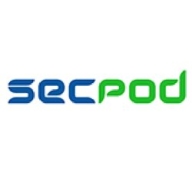


SanerNow CyberHygiene Platform and Microsoft Defender for Cloud compete in cybersecurity. Users find SanerNow preferable for pricing and support, although Microsoft Defender offers advanced features making it attractive for many organizations.
Features: SanerNow CyberHygiene Platform provides strong vulnerability management, patch management, and compliance reporting. Microsoft Defender for Cloud offers advanced threat protection, security management, and integration with other Microsoft services.
Ease of Deployment and Customer Service: SanerNow is known for straightforward deployment and efficient customer service, aiding implementation. Microsoft Defender is seamlessly integrated with Microsoft Azure but may require more time to optimize in diverse cloud environments.
Pricing and ROI: SanerNow CyberHygiene Platform offers competitive pricing with an attractive ROI for endpoint protection. Microsoft Defender for Cloud has higher setup costs but provides substantial ROI for firms leveraging Microsoft ecosystems for cloud security.
| Product | Market Share (%) |
|---|---|
| Microsoft Defender for Cloud | 5.2% |
| Zafran Security | 1.0% |
| SanerNow CyberHygiene Platform | 0.4% |
| Other | 93.4% |



| Company Size | Count |
|---|---|
| Small Business | 26 |
| Midsize Enterprise | 7 |
| Large Enterprise | 45 |
Zafran Security integrates with existing security tools to identify and mitigate vulnerabilities effectively, proving that most critical vulnerabilities are not exploitable, optimizing threat management.
Zafran Security introduces an innovative operating model for managing security threats and vulnerabilities. By leveraging the threat exposure management platform, it pinpoints and prioritizes exploitable vulnerabilities, reducing risk through immediate remediation. This platform enhances your hybrid cloud security by normalizing vulnerability signals and integrating specific IT context data, such as CVE runtime presence and internet asset reachability, into its analysis. No longer reliant on patch windows, Zafran Security allows you to manage risks actively.
What are the key features of Zafran Security?
What benefits can users expect from Zafran Security?
In industries where security is paramount, such as finance and healthcare, Zafran Security provides invaluable protection by ensuring that only exploitable vulnerabilities are addressed. It allows entities to maintain robust security measures while allocating resources efficiently, fitting seamlessly into existing security strategies.
Microsoft Defender for Cloud is a comprehensive security solution that provides advanced threat protection for cloud workloads. It offers real-time visibility into the security posture of cloud environments, enabling organizations to quickly identify and respond to potential threats. With its advanced machine learning capabilities, Microsoft Defender for Cloud can detect and block sophisticated attacks, including zero-day exploits and fileless malware.
The solution also provides automated remediation capabilities, allowing security teams to quickly and easily respond to security incidents. With Microsoft Defender for Cloud, organizations can ensure the security and compliance of their cloud workloads, while reducing the burden on their security teams.
SecPod’s SanerNow CVEM prevents cyberattacks. It is a fully integrated, continuous, & automated platform designed to help enterprise IT Security Teams overcome security risks posed by vulnerabilities and misconfigurations. The solution offers seven modules driven by one agent & can be operationalized through an integrated cloud console.
SanerNow Continuous Vulnerability & Exposure Management (CVEM) platform offers an innovative approach to cyber-attack prevention and attack surface management.
SanerNow, with its CVEM capabilities, offers a new outlook on cybersecurity by evaluating enterprise IT infrastructure from a weakness perspective.
By integrating seven modules in one platform, the solution offers a unified approach to tackle IT infrastructure weaknesses - from scanning & detecting vulnerabilities & misconfigurations, asset exposure management, risk prioritization, patch management, endpoint management, and compliance management.
The seven modules are:
SanerNow AE: Discover and monitor usage of hardware and software assets in your IT network, manage licenses and more, daily.
SanerNow CPAM: Continuous assessment of 70+ anomalies on 2000+ data points of infrastructure/posture to detect outliers, trends, and security control deviations.
SanerNow VM: Detect, assess, and prioritize vulnerabilities on devices using industry’s fastest scanner & world’s largest security intelligence library of 160,000+ checks.
SanerNow CM: Detect and fix misconfigurations to harden systems and comply with regulatory standards or custom policies.
SanerNow RP: Prioritize risk of vulnerabilities, misconfigurations, and other weaknesses, remediate effectively.
SanerNow PM: Integrated patch management to automatically deploy patches for 30+ version of Windows, Linux, Mac OSs and 400+ third-party applications.
SanerNow EM: Get complete visibility into your endpoints and use 100+ security controls for software deployment, system tune-up, application & device control, and more.
The platform offers infrastructure inventory visibility, network anomaly normalization, detection, prioritization, remediation & system hardening of endpoints across every infrastructure layer.
It improves risk visibility beyond software vulnerabilities, expanding the scope of vulnerability management by monitoring more than 100 endpoint health controls, deploying/uninstalling software system health monitoring, eliminating rogue processes and applications, identifying malicious connections and devices, applying system-level security controls, system tuning, fix deviations and anomalies and building queries to get instant visibility to security risks.
We monitor all Vulnerability Management reviews to prevent fraudulent reviews and keep review quality high. We do not post reviews by company employees or direct competitors. We validate each review for authenticity via cross-reference with LinkedIn, and personal follow-up with the reviewer when necessary.